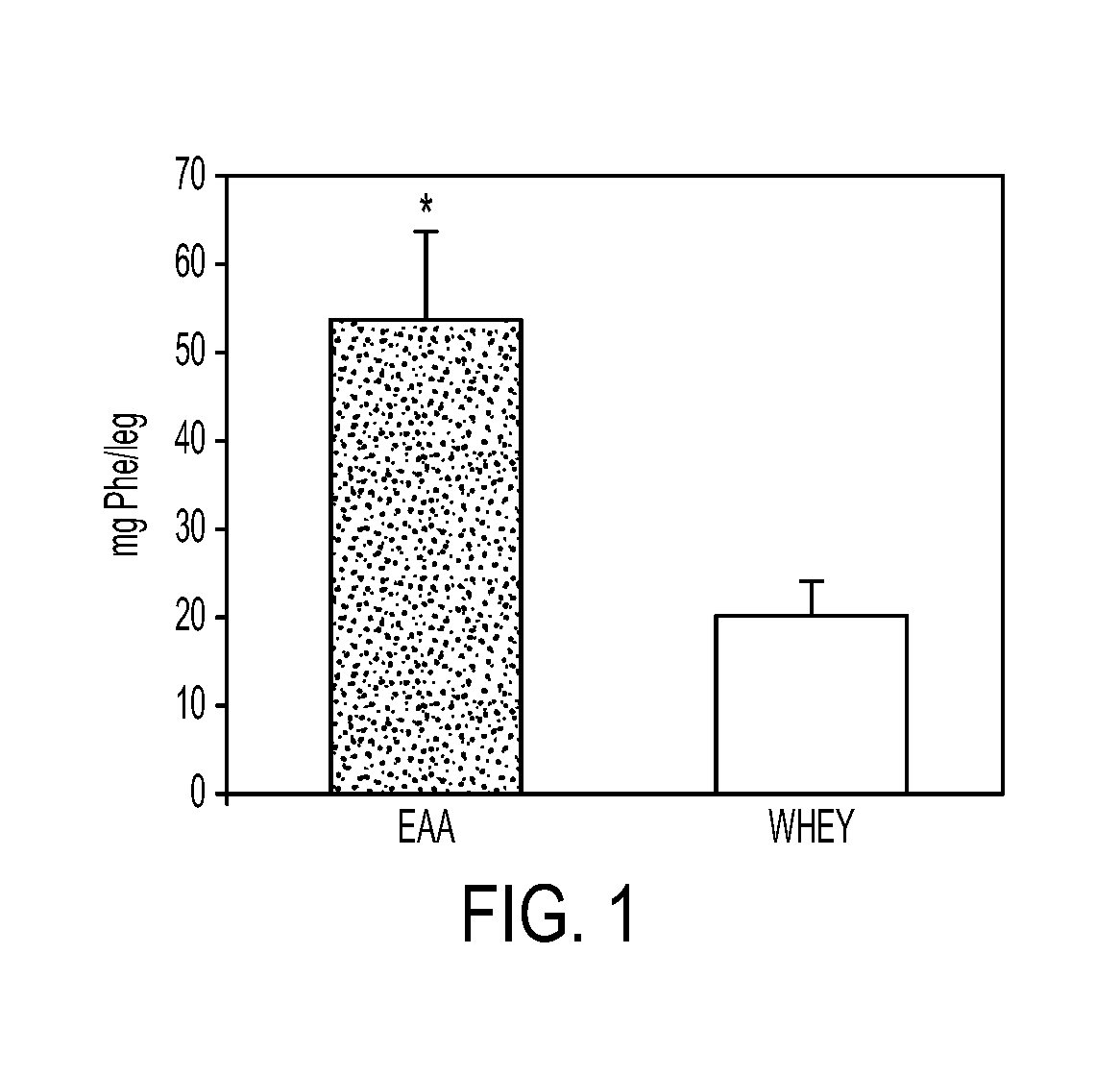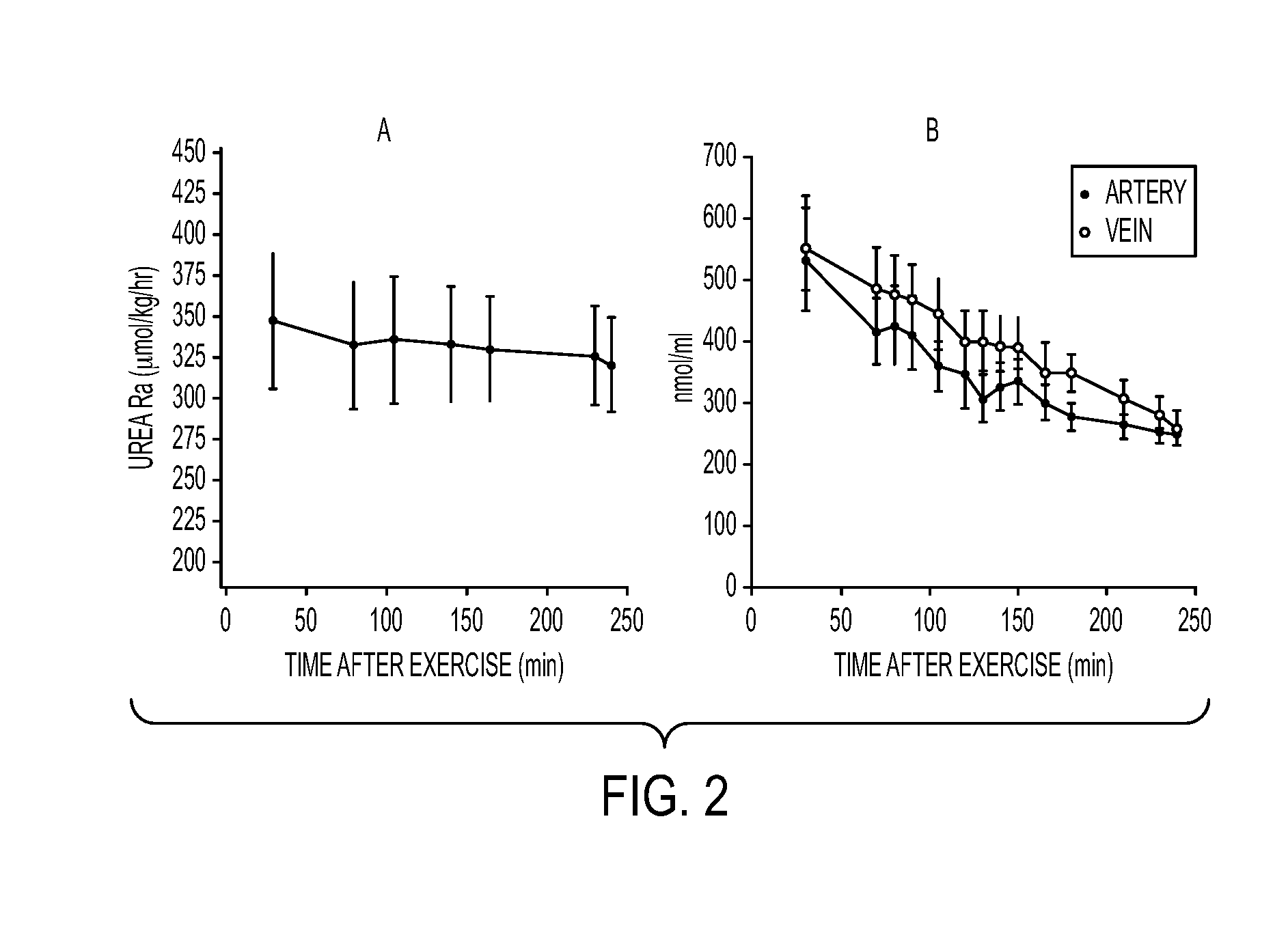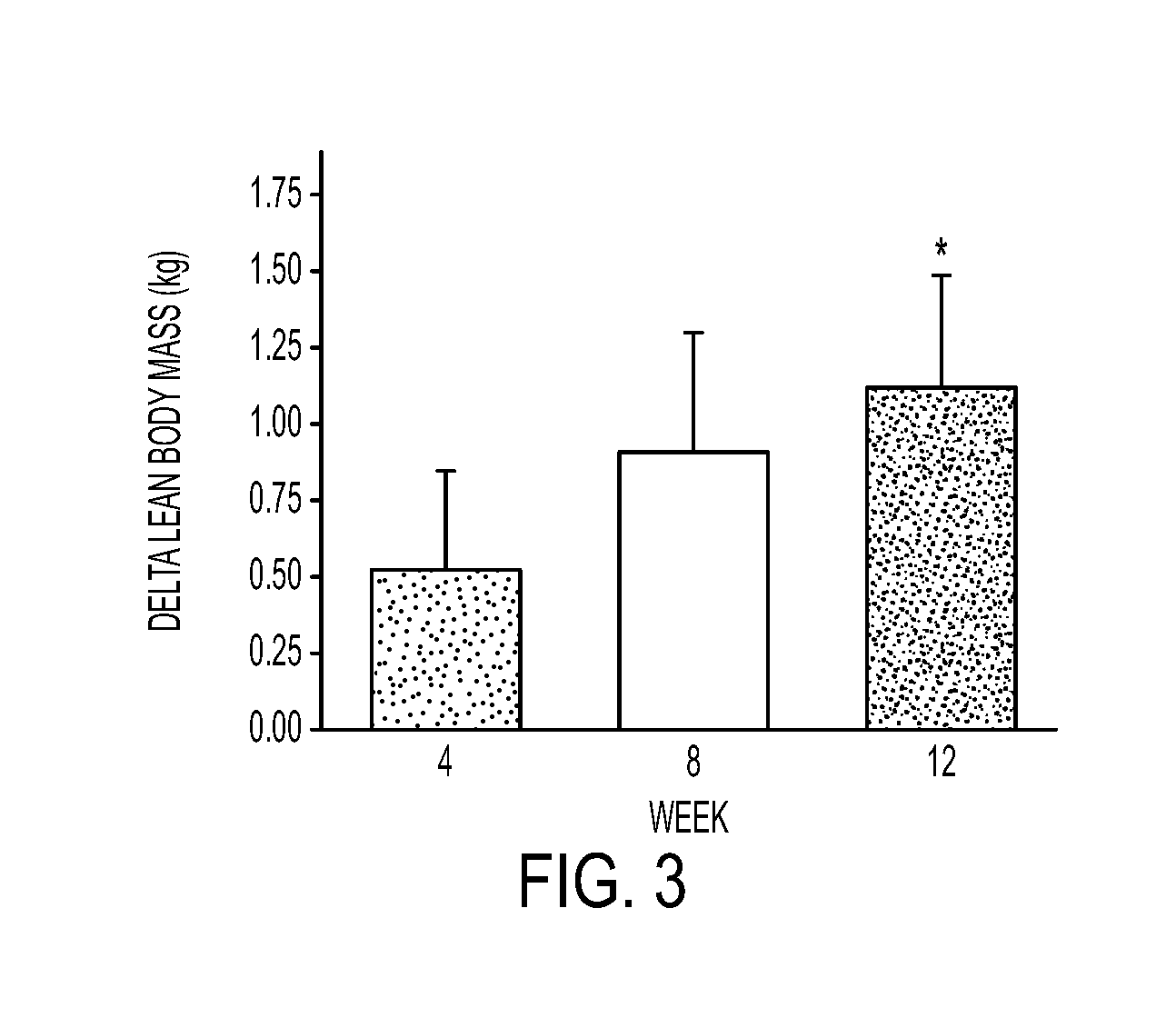Compositions and Methods for Sparing Muscle in Renal Insufficiency and During Hemodialysis
a technology of hemodialysis and muscle, applied in the field of nutritional compositions, can solve the problems of renal failure, common occurrence of renal failure, deleterious effects of renal insufficiency, etc., and achieve the effects of improving protein intake, improving skeletal muscle protein accretion, and improving the net balance of skeletal muscl
- Summary
- Abstract
- Description
- Claims
- Application Information
AI Technical Summary
Benefits of technology
Problems solved by technology
Method used
Image
Examples
example 1
[0072]To demonstrate the advantage of EAAs over traditional high quality proteins, muscle protein metabolism was examined in elderly subjects before and after the ingestion of whey protein or EAAs. Muscle protein kinetics were calculated before and for 3.5 hours following the bolus oral ingestion of 15 g EAAs (N=7) or 15 g whey protein (N=8) in elderly human subjects. Net phenylalanine uptake, an indication of net protein balance, over the post-supplement period was significantly greater for the EAA group compared to the whey group, as depicted graphically in the chart of FIG. 1 (P<0.05; 53±10 mg phe / leg EAA vs 21±5 mg phe / leg whey). While, both supplements stimulated muscle protein synthesis (p<0.05), the increase was greatest in the EAA group. The post-prandial rate of muscle protein synthesis was 0.088±0.011%.hr-1 for the EAA group, and 0.066±0.004%.hr-1 for the whey group (p<0.05). The greater increase in protein synthesis was due in part to the large increase in peripheral amin...
example 2
[0074]To demonstrate the effects of EAA on blood urea production, subjects were given two doses of 6 g EAAs one hour apart after completion of a bout of resistance exercise. Acute changes in the rate of urea production were measured using a tracer technique known to those of skill in the art. Despite ingestion of a total of 12 g of EAAs, urea production did not increase and, in fact, trended downward, as graphically depicted in the chart of FIG. 2A. Using the same tracer methodology, it was demonstrated that an infusion of alanine or glutamine stimulated urea significantly over the same time interval. The reason for the lack of an increase in urea production is believed to be the reutilization of non-essential amino acids for muscle protein synthesis rather than transport to the liver for degradation and incorporation of the nitrogen into urea. This is reflected by the steady drop in the concentration of alanine in the blood, as depicted in the chart of FIG. 2B. Thus, the EAA blend ...
example 3
[0075]In order to demonstrate the efficacy of prolonged EAA supplementation on lean body mass (LBM) and functional outcomes, 12 elderly (67.0±5.6 [SD] years) subjects with impaired glucose tolerance who were given 11 g of EAA capsules BID for 12 weeks were studied. The subjects did not engage in a regular exercise program and dietary records indicated no change in dietary habits or intake. Following this structure, it was discovered that LBM was measured by duel energy x-ray absorptiometry (DEXA) at baseline and at weeks 4, 8, and 12. In addition, maximal leg strength and muscle function were tested at baseline and weeks 8 and 12. LBM increased steadily at each 4 week time point, reaching significance at 12 weeks, as depicted in the chart of FIG. 3. The increase of 1 kg of LBM, on average, is of potential benefit in terms of metabolic reserve in stressed patient populations.
[0076]The increase in LBM alone is important to the CKD population, as it a strong predictor of morbidity and ...
PUM
| Property | Measurement | Unit |
|---|---|---|
| lean body mass | aaaaa | aaaaa |
| time | aaaaa | aaaaa |
| time | aaaaa | aaaaa |
Abstract
Description
Claims
Application Information
 Login to View More
Login to View More - R&D
- Intellectual Property
- Life Sciences
- Materials
- Tech Scout
- Unparalleled Data Quality
- Higher Quality Content
- 60% Fewer Hallucinations
Browse by: Latest US Patents, China's latest patents, Technical Efficacy Thesaurus, Application Domain, Technology Topic, Popular Technical Reports.
© 2025 PatSnap. All rights reserved.Legal|Privacy policy|Modern Slavery Act Transparency Statement|Sitemap|About US| Contact US: help@patsnap.com



